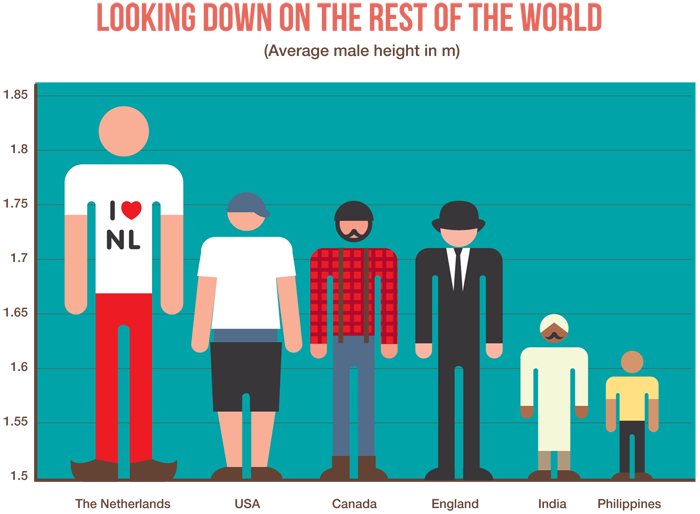The height of individuals has always been a focal point of anthropological discourse, significantly influencing health perceptions, social hierarchies, and cultural identities. Understanding how tall people were during the 1700s necessitates a cultural relativism perspective, which allows for a nuanced exploration of the various factors influencing physical stature, moving beyond mere figures to encapsulate broader societal dimensions. This analysis will adhere to an integrated framework, delving into historical data, nutritional status, societal structures, and the interplay between environmental conditions and human physiology.
To embark on this discourse, it is essential to establish baseline figures pertaining to average heights during the 1700s. In many European contexts, for example, the average height for men ranged from approximately 5 feet 6 inches to 5 feet 8 inches, while women averaged around 5 feet 2 inches to 5 feet 4 inches. However, these statistics are not uniform; they exemplify a profound variation influenced by geographic locale, socioeconomic factors, and cultural practices.
At the crux of this discussion lies the pivotal role of nutrition, which must be contextualized within the prevailing agrarian economies of the era. The 1700s marked a time when diets were primarily dictated by regional agricultural produce. In Northern Europe, where high-calorie oats and rye were staples, people tended to exhibit greater stature compared to their Southern counterparts, who relied heavily on less nutrient-dense grains. Such dietary differences underscore the necessity of employing a cultural relativism perspective to comprehend how local practices and resources directly impacted individual growth trajectories.
Moreover, societal structures in this period significantly influenced height alongside nutritional availability. The feudal systems prevalent in many parts of Europe restricted access to food among lower strata, resulting in malnutrition that stunted growth. Conversely, individuals from affluent backgrounds had better access to a more diverse and calorically rich diet, thereby achieving greater heights. This dichotomy sheds light on the complex interplay of class and stature, where height became a symbol of socio-economic privilege, contributing to the emergence of societal hierarchies informed by physical characteristics.
In addition to nutrition and class, one must consider the impact of environmental conditions on height. Climate, for instance, plays a significant role in human physiology. In colder regions, where individuals contend with harsher elements, taller physiques may confer survival advantages, such as enhanced thermoregulation. This notion further emphasizes the relevance of cultural relativism, as varying environmental pressures across geographic locales necessitate adaptive strategies that can manifest in physical stature. Such adaptations can be observed in the Nordic populations, known historically for their notable height compared to peoples of warmer climates.
Religious and cultural beliefs also inform the concepts of body image and height. In some societies, taller individuals were often imbued with symbolic attributes of power, authority, and nobility. This reverence for height was not merely coincidental; it was rooted in cultural narratives that intertwined physicality with virtue and moral standing. The elevation of certain heights within cultural paradigms reflects an intrinsic value system that prioritizes physical attributes, thus generating implications for social cohesion and community identity.
As one delves deeper into the anthropological implications of average height during the 1700s, the exploration inevitably leads to questions regarding the evolution of human beings themselves. The concept of the “bigger is better” paradigm suggests a broader context for understanding the intersection of stature with evolutionary biology. Height may have acted as a significant determinant of mating success, wherein taller individuals could accrue higher social status and thus, greater reproductive advantages. Such hypotheses invite further exploration of the natural selection processes influenced by socio-cultural environments.
As the industrial revolutions of the late 18th century burgeoned, they initiated a profound transformation in human society that would ultimately affect height. Urbanization led to changes in dietary patterns and exposure to systemic health care, ultimately resulting in measurable increases in average heights in subsequent generations. This evolution signifies the dynamic and fluid nature of human biology influenced by culture and environment, affirming the relevance of a cultural relativism perspective that underscores how socio-economic and environmental contexts coalesce to shape human development.
In summation, the query of average height during the 1700s transcends a mere statistic; it invites an intricate examination of the myriad factors that contribute to human physiology. Through the lens of cultural relativism, one can appreciate the interconnected web of nutrition, societal structures, environmental conditions, and cultural beliefs that coalesce to render a holistic understanding of height as a marker of human experience. Such an investigation not only prompts curiosity about historical norms but also encourages reflections on contemporary implications, suggesting that our understanding of human development is ever-evolving, marred by the complexities of cultural interpretations and environmental adaptations.
This exploration serves as an invitation to reconsider our assumptions regarding physicality across time, fostering an enriched discourse surrounding health, identity, and the anthropological narratives that define humanity itself.
